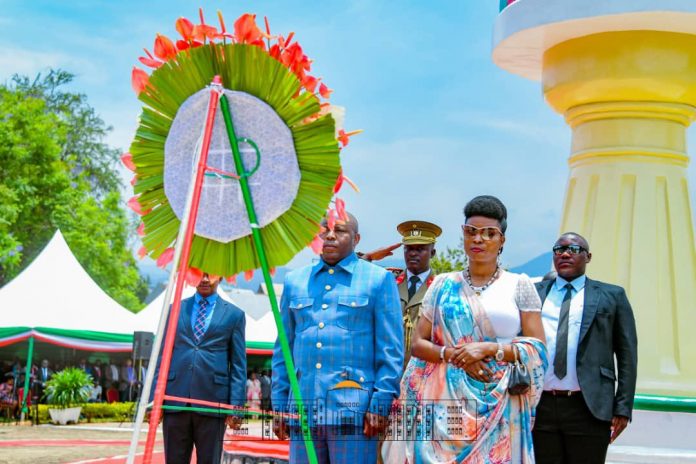
This Friday Burundi marked 29 years since the assassination of its first democratically elected and Hutu president Melchior Ndadaye.
After almost three decades since the assassination of the first democratically elected president in October 1993, the country is still seeking for Truth and Reconciliation after the ethnic violence that led to thousands of people losing their lives.
One of the highlights of the country’s bloody civil war came in 1993 when Burundi’s first democratically elected and Hutu President was assassinated in Burundi’s capital Bujumbura after three months in the office.
The assassination of President Melchior Ndadaye sparked an ethnic violence with thousands of civilians on both Hutu and Tutsi minority ethnic group losing their lives. The violence developed into the decade long Burundi civil war that led to the killing of more than 100,000 people.
According to the result released in 1996 by the United Nations in Ndadaye’s murder, the army command was accused of being responsible for the assassination. The UN investigation report didn’t not name specific figure as being responsible.
Last October, the Truth and Reconciliation Commission (TRC) launched a three weeks activities in Bujumbura giving opportunities to the victims and perpetrators to come out and testify or confess on what happened during the ethnic clashes.
“In 1972 Bujumbura was the capital city of Burundi, we are here after going all round other provinces recently in Muyinga, Kirundo, Bururi, Makamba and Rumonge and other areas where constructions were being held and they found mass graves,” said the president of TRC Pierre Claver Ndayicariye earlier on.
The Truth and Reconciliation Commission found 16 mass graves in Bururi Province during its investigations from February 8 to March 27, 2021, with at least 2,160 victims were exhumed.
In Muyinga 6 mass graves were reported and dug as the commission exhumed the remains of 452 people, Kirundo province 63 mass graves were revealed and the remains of 128 people exhumed from the mass graves.
“There won’t be peace if we don’t know the truth of what happened. Peace is impossible if we don’t snub lies…the lies by hiding behind the political parties and ethnic groups…we always say ethnicity doesn’t kill but bad leadership kills,” said Mr. Ndayicariye.
The Truth and Reconciliation Commission’s mandate starts from 1885 when many African countries were partitioned, the commission is expected to investigate all the crimes which were committed during the civil in Burundi until 2008.
The Truth and Reconciliation Commission found 8 mass graves with more than 7000 remains of the victims in Karusi, “the perpetrators who are still alive were grappled with fear…because the truth they had hidden for 49 years has started to come out from mass graves, bones, widows, orphans and archives,” said the TRC president Pierre Claver Ndayicariye during the activities last October.
TRC said that thousands of people who were killed included religious leaders, civil servants, business people, lawyers, soldiers and students.
As part of the healing and reconciliation process between Burundians after the brutal ethnic violence that led to hundreds of thousands losing their lives, the 2000 Arusha agreement that put an end to the civil war in the country recommended for the formation of the Truth and Reconciliation Commission.
The Commission was formed in 2014 for the reconciliation of Burundians to soothe and heal the hearts and restore Burundian society on the path of change and equal progress.
The mandate of the TRC is to conduct investigations and establish truth about the serious violations of human rights and international human rights law from 1885 to the date of signing the cease fire agreement with FNL in 2008.
Burundi gained its Independence from Belgium in 1962 one year after the assassination of Prince Louis Rwagasore who is considered as the independence hero for the country.
According to the TRC more than 4000 mass graves were revealed mostly of 1972 when mass killings of the Hutu ethnicity happened ten years after the country gained its independence.
Burundi government in 2018 openly accused former colonizer Belgium for destabilizing the country and playing a role in the civil war that rocked the country for almost 50 years.
Burundian society is composed of Hutu, Tutsi and the Twa ethnic groups, with more than 70% of the 11 million population are from the Hutu ethnic group. The country was ruled dominantly by the Tutsi minority since Independence 1962.
